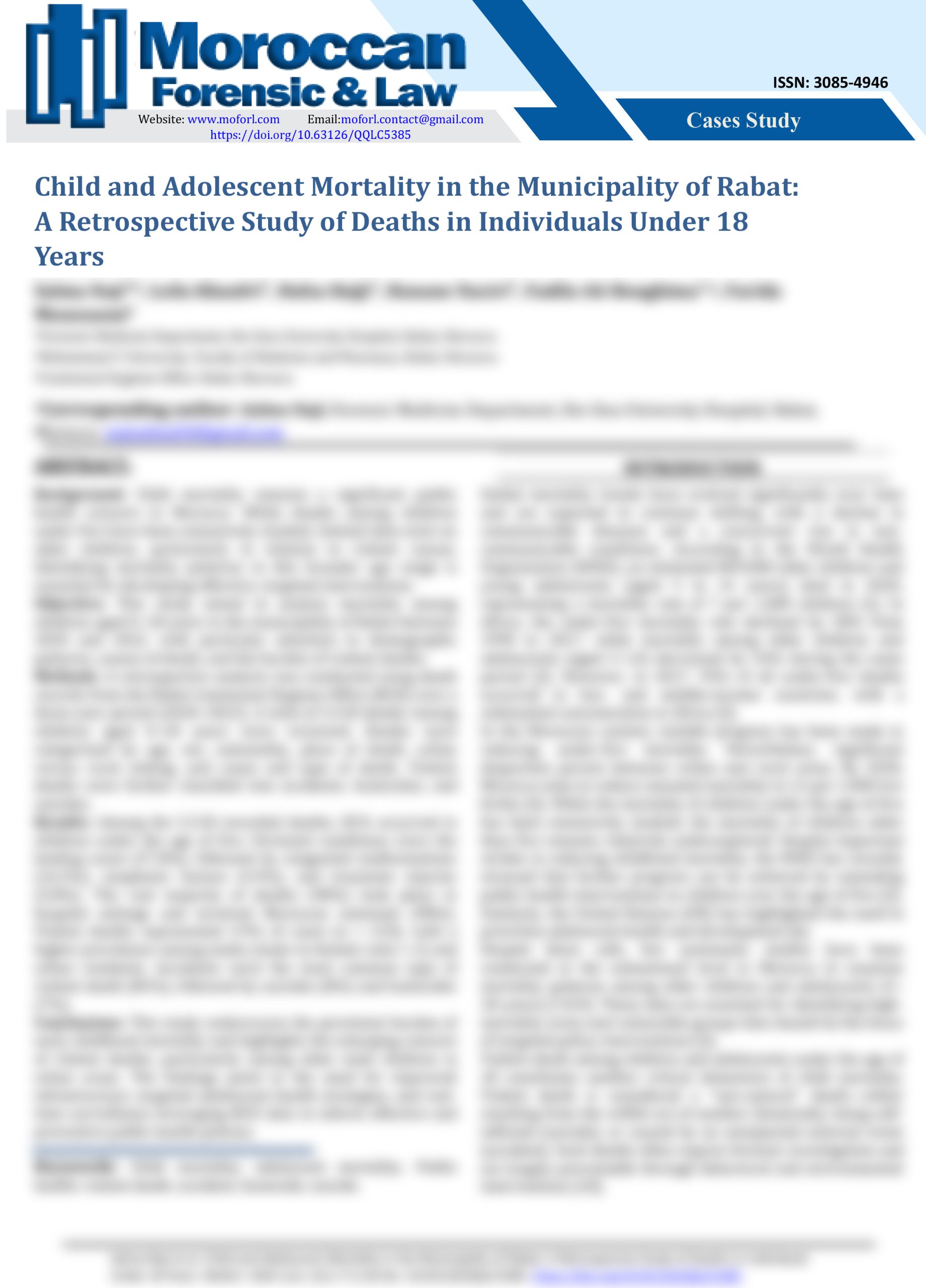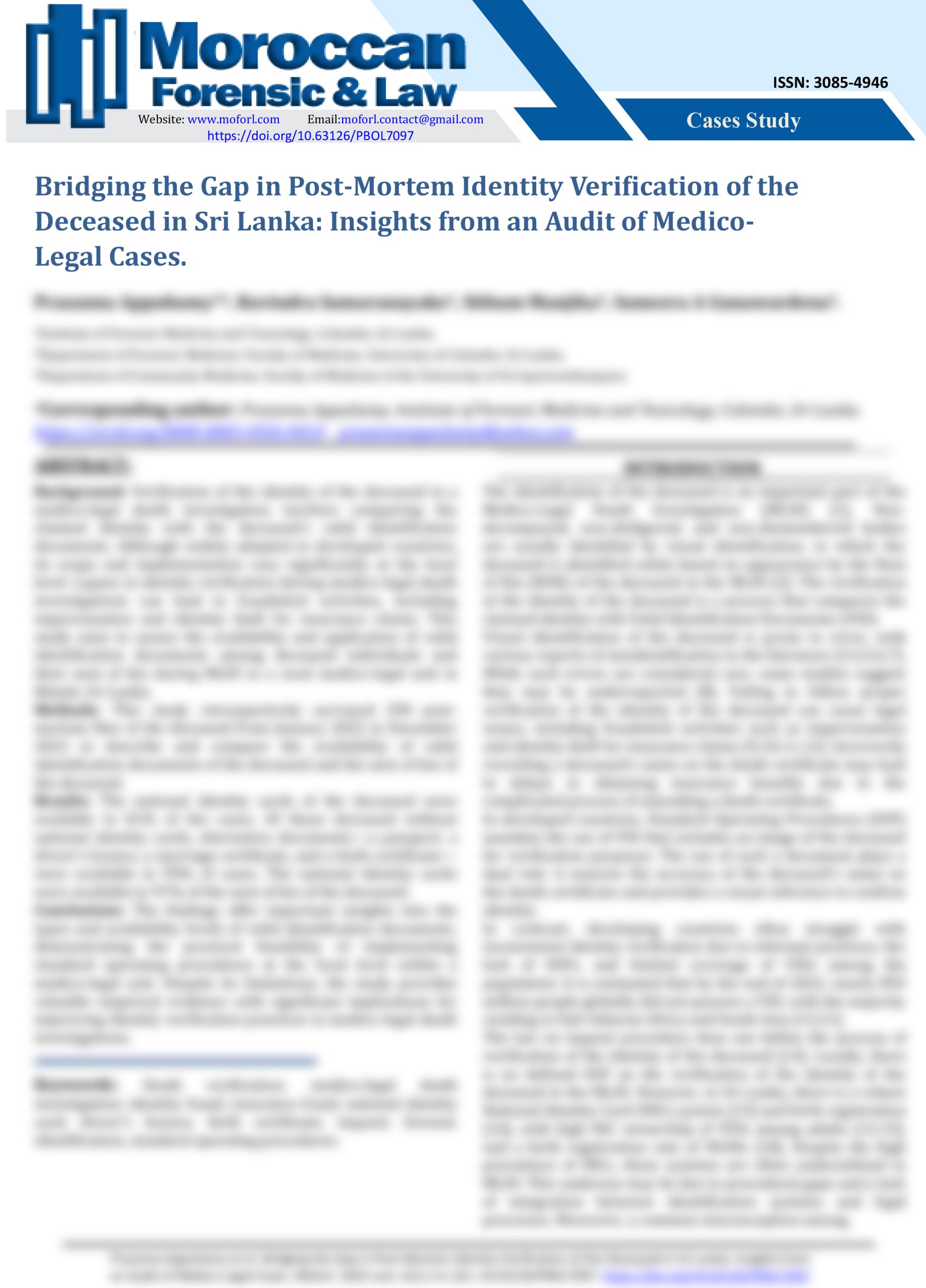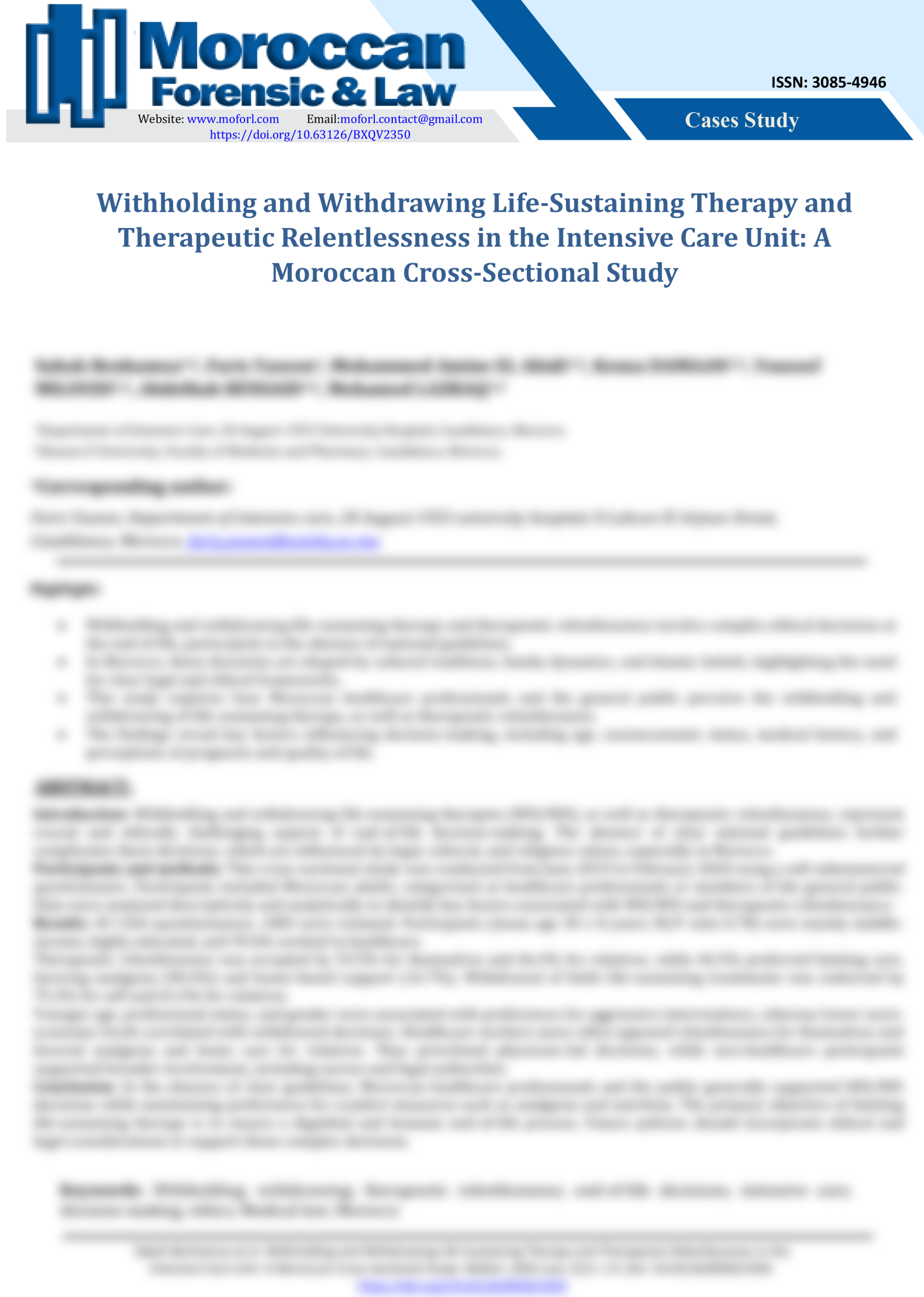Child and Adolescent Mortality in the Municipality of Rabat: A Retrospective Study of Deaths in Individuals Under 18 Years

Child and Adolescent Mortality in the Municipality of Rabat A Retrospective Study of Deaths in Individuals Under 18 Year
Background:
Child mortality remains a significant public health concern in Morocco. While deaths among children under five have been extensively studied, limited data exist on older children, particularly in relation to violent causes. Identifying mortality patterns in this broader age range is essential for developing effective, targeted interventions.
Objective:
This study aimed to analyze mortality among children aged 0–18 years in the municipality of Rabat between 2020 and 2022, with particular attention to demographic patterns, causes of death, and the burden of violent deaths.
Methods:
A retrospective analysis was conducted using death records from the Rabat Communal Hygiene Office (BCH) over a three-year period (2020–2022). A total of 5,518 deaths among children aged 0–18 years were reviewed. Deaths were categorized by age, sex, nationality, place of death, urban versus rural setting, and cause and type of death. Violent deaths were further classified into accidents, homicides, and suicides.
Results:
Among the 5,518 recorded deaths, 82% occurred in children under the age of five. Perinatal conditions were the leading cause (57.8%), followed by congenital malformations (16.5%), neoplastic lesions (3.9%), and traumatic injuries (3.8%). The vast majority of deaths (98%) took place in hospital settings and involved Moroccan nationals (98%). Violent deaths represented 3.9% of cases (n = 210), with a higher prevalence among males (male-to-female ratio ≈ 2) and urban residents. Accidents were the most common type of violent death (85%), followed by suicides (8%) and homicides (7%).
Conclusions:
This study underscores the persistent burden of early childhood mortality and highlights the emerging concern of violent deaths, particularly among older male children in urban areas. The findings point to the need for improved infrastructure, targeted adolescent health strategies, and real-time surveillance leveraging BCH data to inform effective and preventive public health policies.



